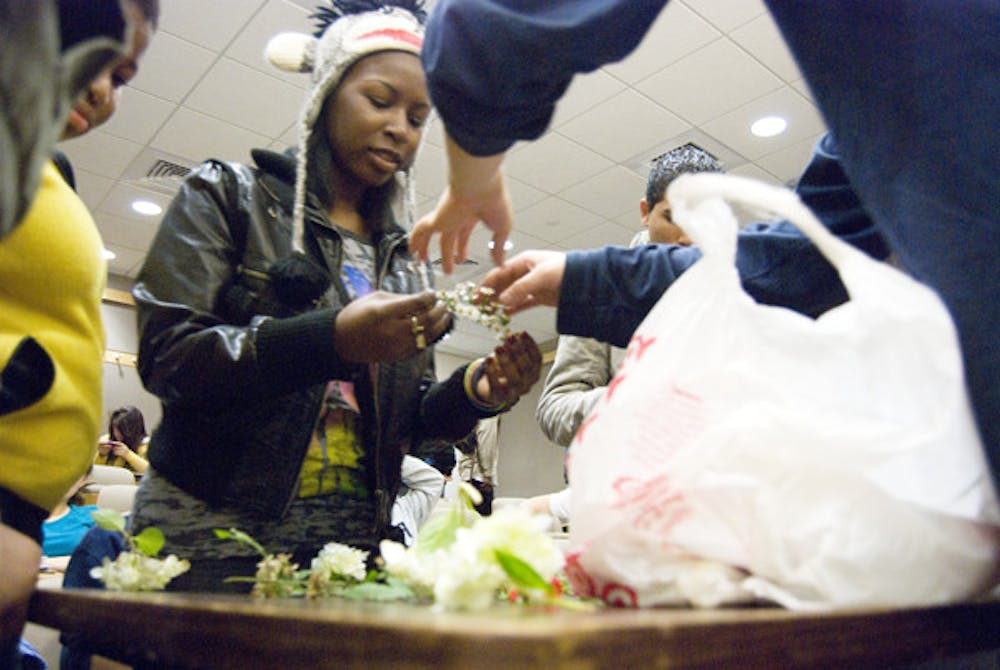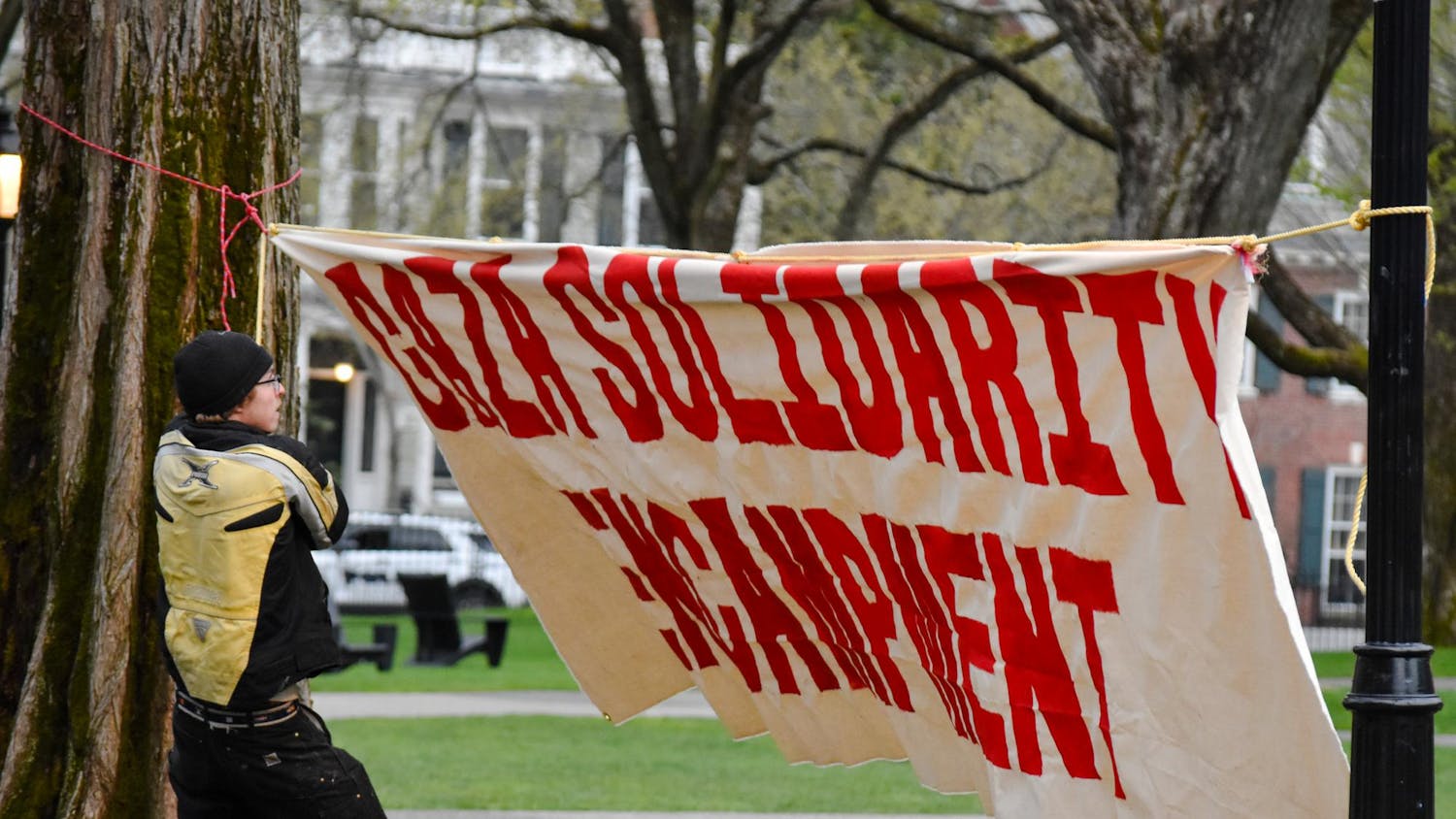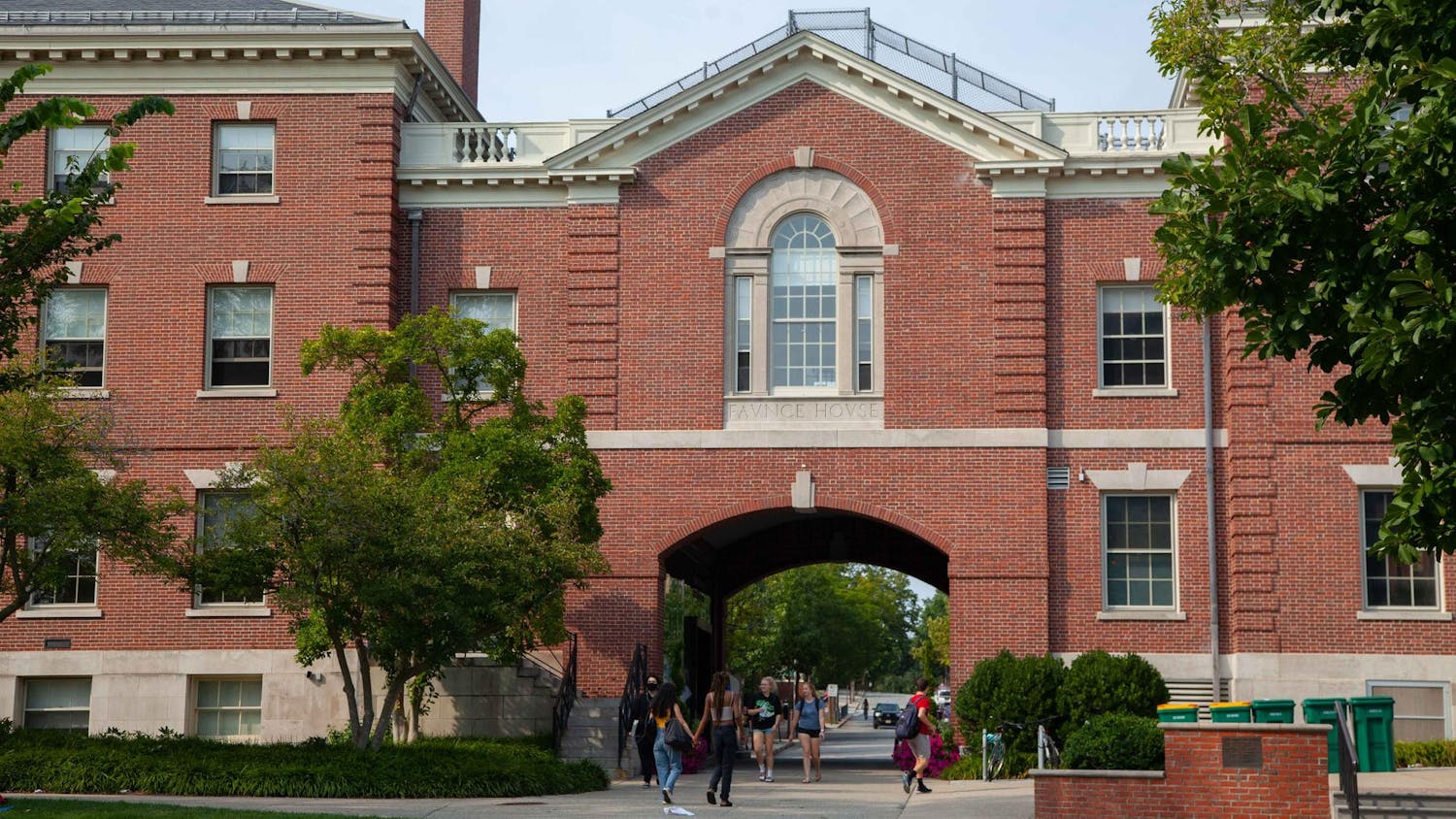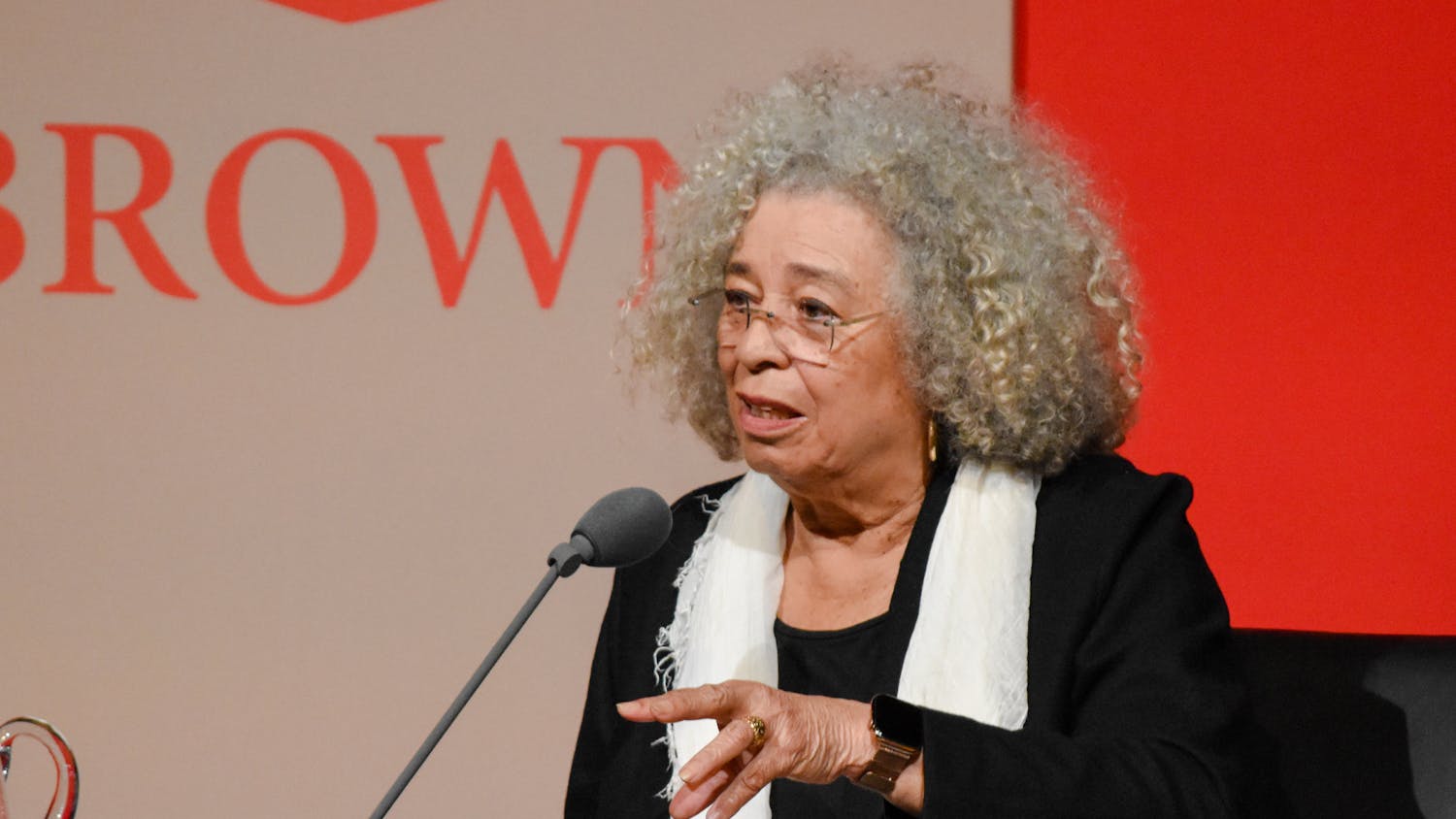It sounds like the beginning of a joke: What do an elite Ivy League university and the third-poorest public school district in the nation have in common?
But the answer — their shared community of Providence, Rhode Island — is no punch line, and the wide-ranging relationship between the University and the Providence Public School District has left its mark on students and teachers both on and off College Hill.
Individual faculty members and student groups have long been involved with Providence schools, but Brown began to "institutionalize" the relationship and broaden its scope after the University Steering Committee on Slavery and Justice recommended three years ago that Brown make new commitments to the district, said Professor of Education Kenneth Wong, who chairs the department.
Likewise, the city school district has begun "systematically" to build a system that can "accommodate the volunteers and resources" coming from Brown, said Providence Public Schools Superintendent Tom Brady.
As the University expands its programs in Providence schools, both Brown and Providence students are reaping the benefits, educational program managers at the Swearer Center for Public Service said, and an increasing number of students are leaving College Hill to volunteer.
"If you look at that trajectory over the last 20 years, the Hill is not so high, and we're not so far from the city," said Hanna Rodriguez-Farrar '87 MA'90 PhD'09, assistant to President Ruth Simmons and a member of the Corporation's Board of Trustees. "The ties are much closer now than they were when I was going to Brown."
‘Trying to institutionalize'
The 2006 final report of the Slavery and Justice committee criticized the decentralization of Brown's initiatives in Providence's public schools and urged the University to do better.
"One of the most obvious and meaningful ways for Brown to take responsibility for its past is by dedicating its resources to improving the quality of education available to the children of our city and state" as part of a wider acknowledgement of the University's historical ties to slavery, the report said. Providence public school students are disproportionately black, and the committee cited the historical links between slavery and the denial of educational opportunity.
In response, Brown took a three-pronged approach to improving its education outreach. First, it established a Fund for the Education of the Children of Providence, with a final endowment goal of $10 million — $1.5 million of which has been raised. The fund announced its first four grants in May: A $118,000 purchase of graphing calculators for all of Providence's middle and high schools and three $10,000 curricular development grants for Roger Williams Middle School, Vartan Gregorian Elementary School and Hope High School.
The grants were determined by a group of Corporation members that oversees the fund, said Rodriguez-Farrar, who was on the committee before this year. Committee members, all of whom live in Rhode Island, elicit ideas for grants from the district — the calculator donation, for example, was suggested by Brady, administrators said.
"We were very concerned with touching the students directly," Rodriguez-Farrar said. The calculator grant was a "perfect combination" of a grant that directly affected student experiences and had a long-term benefit, she added, because the calculators were accompanied by professional development and teacher training.
"There are pieces to it that should make a lasting difference in math education in Providence public schools," she said.
Members of the Corporation oversight committee hope to announce further grants from the fund by the end of this semester, said Vice President for Public Affairs and University Relations Marisa Quinn.
Also in response to the Slavery and Justice report, the University now enrolls up to 10 Urban Education Fellows each year. These fellows receive free tuition for a one-year master's degree, either in teaching or in urban education policy. In exchange, they spend three years after graduation working in Providence-area schools.
"One year isn't really enough to establish relationships" within communities, said Heather Johnson MA'09, an urban education fellow. "I liked the idea of that commitment to a specific urban community for an extended period of time."
Like the education fund, the fellowship program is designed as a long-term investment.
"If we keep producing this pipeline, in 10 years we will have 80 to 100 of these urban education fellows who contributed at least three years of service to the urban community," Wong said.
Lastly, to coordinate the variety of programs and outreach initiatives already existing between Brown and the Providence school district, the University created the Office of Education Outreach. Its primary job is finding internships for urban education students, Wong said.
The office also "helps people in the schools understand what the resources are at Brown," Quinn said, adding that it can show people at Brown where to implement new programs or research projects without duplicating someone else's work. Some Providence schools "make perfect sense because we're already there, and some make no sense because we're already there," she said.
The education outreach office runs a Web site listing Brown's various initiatives in Providence schools, but it is out of date.
Elizabeth Richards MA'09 is temporarily acting as director of education outreach, after former director Tehani Collazo '91 left the post this summer. The Education Department has received approval to fill the position despite Brown's budget crunch, Wong said, and hopes to hire a new director "within a month."
"We don't want to let a short-term economic cycle push us back on this commitment to support building this relationship," Wong said.
Overall, the University is making its partnerships with the district less "dependent on individual faculty or individual students," he added. "What is different now, because of Slavery and Justice, is that we are trying to institutionalize."
Areas for improvement
Despite the expansion of Brown's outreach programs since 2006, there is "so much more to do," Brady said. "And that's on both sides."
Though the creation of the Office of Education Outreach is a big step forward, "there's definitely room for better integration and collaboration" within the University, said Linda Cunningham, program director for educational equity for the Swearer Center.
Grants from the fund, for example, are managed separately from the center's outreach programs.
It was "never the intention of the fund" to work closely with the other educational outreach programs on campus, Quinn said.
"It was always, I think, seen as an additional piece and a university-level piece," she said.
The district's "sporadic" and "fragmented" relationship with Brown has been "remarkably effective on a case-by-case basis," Brady said, "but systematically we've got a lot of work to do."
Providence schools can only "properly tap into" Brown's resources if the district can make its needs known, he said.
"Unless I come up with, ‘Here's specific things that you can do,' then we're wasting each other's time," Brady said.
The superintendent has already identified one weakness: Brown programs, perhaps because of their grassroots beginnings, often contribute more to public schools in the immediate College Hill area than to schools in the rest of the city.
Brady, who attributes this imbalance to the "geography and comfort level" of nearby schools such as Vartan Gregorian and Hope, said one of his challenges is to provide opportunities for Brown to expand its programs to schools
that "definitely could use the help more."
The grants given by Brown's new education fund, especially the donation of graphing calculators to all of Providence's middle and high schools, could begin evening this imbalance. The calculators, TI-Nspires, will arrive in classrooms in mid-November.
Brady said the $118,000 calculator grant goes a long way for the school system, noting that "for a cash-poor district, that's not bad."
But for Brown, it is only the start for what it hopes will become a much larger endowed fund, Quinn said.
‘A crucial first step'
But in a district in which 85 percent of 11th graders were below proficiency in math last year, according to an annual report on Providence schools put out by the state department of education and the University of Rhode Island, new graphing calculators might not address students' most pressing needs.
Brown previously collaborated with Texas Instruments, Inc., on whose board President Ruth Simmons serves, to donate graphing calculators to Hope in 2007. With the calculators, TI provided teacher development training and the Swearer Center formed Algebra in Motion, a student group that sends volunteers to Hope classrooms and runs after-school tutoring and mentoring programs.
"When we got into Hope High, we found out that the calculators were basically useless," said Aditya Voleti '11, an Algebra in Motion coordinator. Because many students lag in basic math, "a lot of times the calculators become like a crutch," he said. "We actually encourage our volunteers to discourage the calculators."
Allowing students without basic math skills to use complex calculators is a "very controversial topic in the math education world," said Ellen House, who leads Hope's math faculty. The calculators get a lot of use in Hope math classrooms, she said, but teachers use them far less in the math classes specifically targeted at students "way below" grade level.
The city rolled out a new district-wide math and science curriculum at the beginning of this year.
"We can't expect students to do high-level math and science without the benefit of calculators and other materials that students in other districts have readily available to them," said Christina O'Reilly, spokeswoman for the district.
"The presence of calculators isn't going to make the difference necessarily," said Johnson — who works as a math specialist at the Rhode Island Department of Education as part of her fellowship — but it's a "crucial first step."
A two-way street
While Brown has a long history of investing volunteer hours and teaching time in Providence schools, direct grants from the University to the district are a recent and relatively untested development.
"Human capital — the will to do the right thing for Providence children — has been there since Brown has been there," Brady said.
The potential of the fund, on the other hand, is in the future, as it continues to grow and make grants that can benefit the district in the long-term, Quinn said.
Unlike grants, volunteering requires a long-term commitment to build relationships, Cunningham said. "It's not a giveaway — like, ‘Here's a box of calculators.'"
And face-to-face volunteer time lets both Brown and Providence students see concrete results, said Algebra in Motion's Voleti. "Tracking the effect of grants or something is very abstract."
At Vartan Gregorian — where athletic teams have sponsored classrooms for years — the school's principal, Colin Grimsey, said the Brown partnership "translates into concrete examples of student performance," including increased test scores.
But Brown's relationship with Providence is not a "one-way street," said Arthur Petrosinelli, principal of Hope High's Information Technology School. Providence schools also offer Brown students a chance to practice teaching and "really get a hands-on approach with inner city students," he said.
Most Brown and Providence public school students "come from worlds that are about as different as it's possible to come from in this country," said House, the Hope High math teacher. "Our kids have an awful lot to offer Brown students."
Though Brown students are often taken aback by the academic needs of Hope students, they change their perceptions after working with Algebra in Motion, Voleti said, adding that many Hope students are "shockingly bright."
Some students have decided to pursue careers in education after getting involved with Swearer Center programs, Cunningham said. "That sort of reaps dividends way down the road," she added. "Way after a piece of expensive equipment will endure."

ADVERTISEMENT




